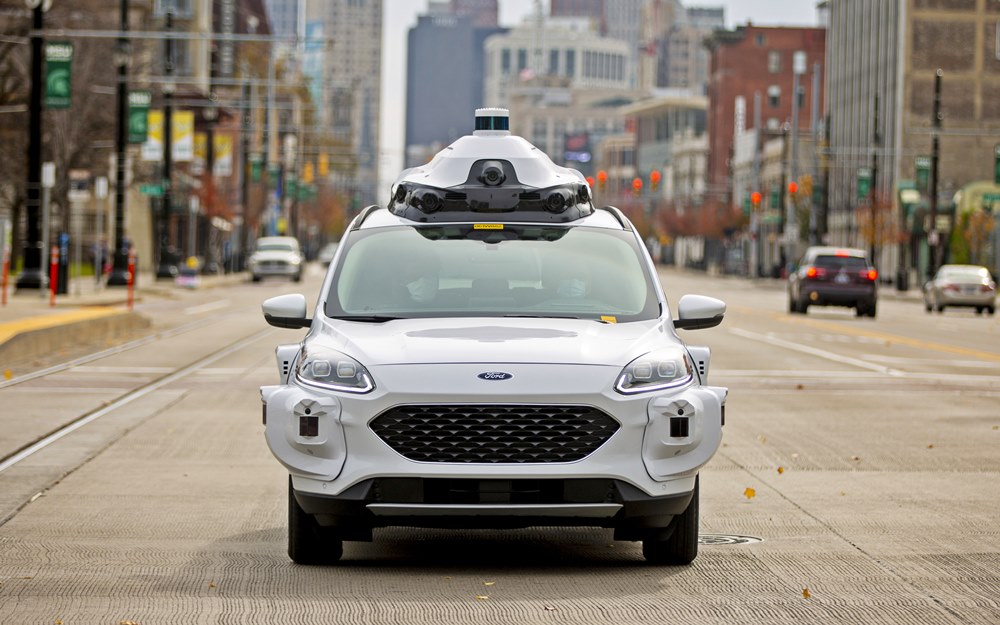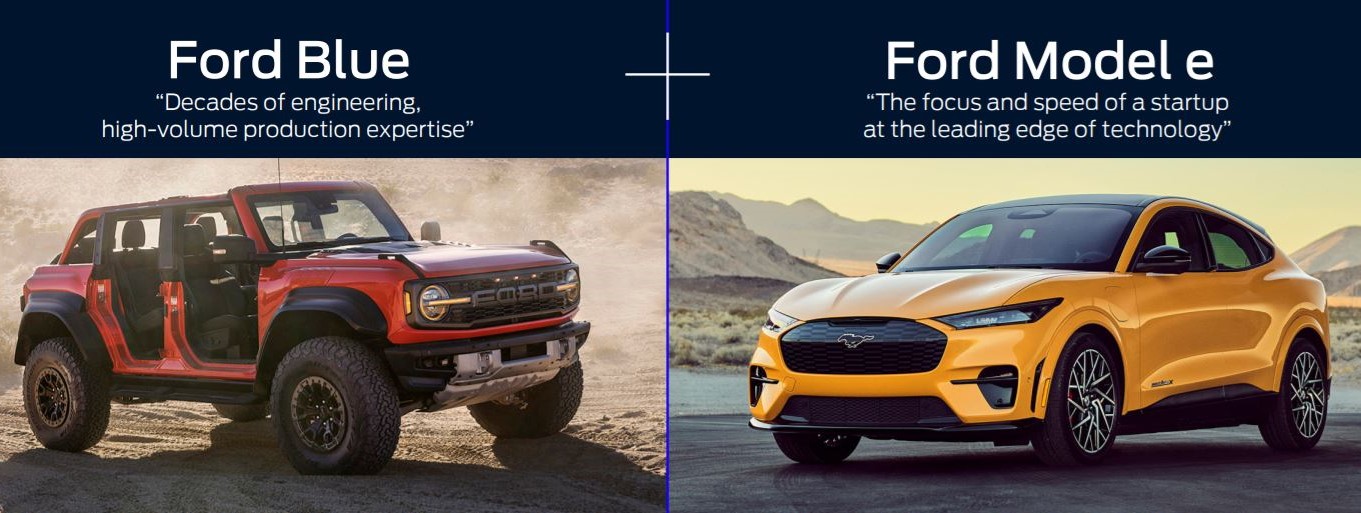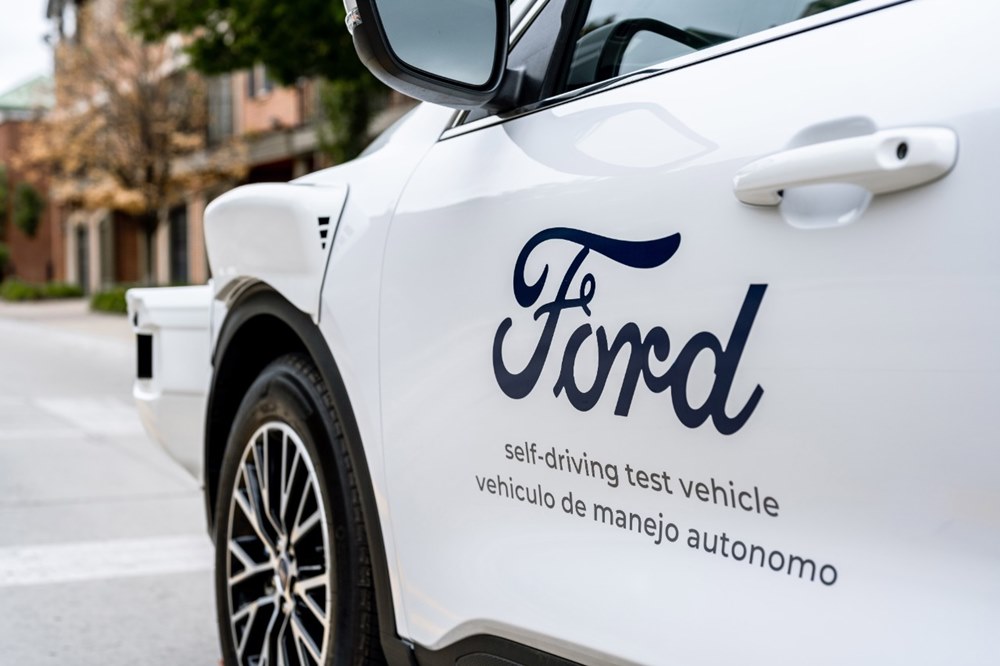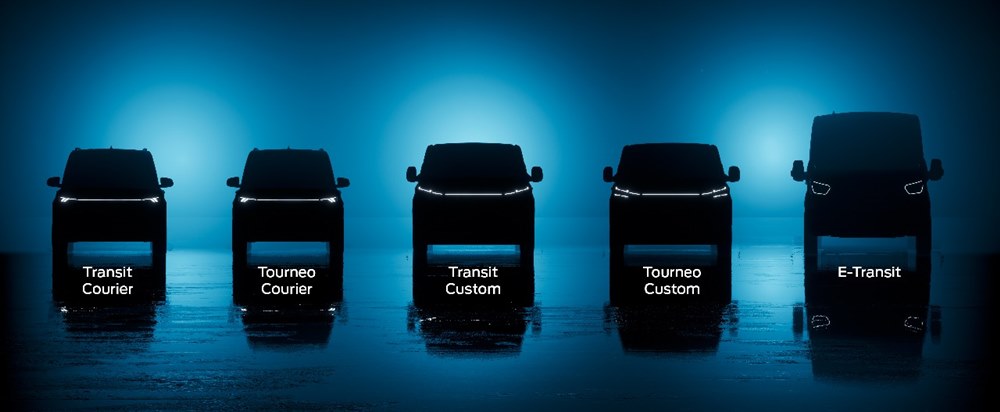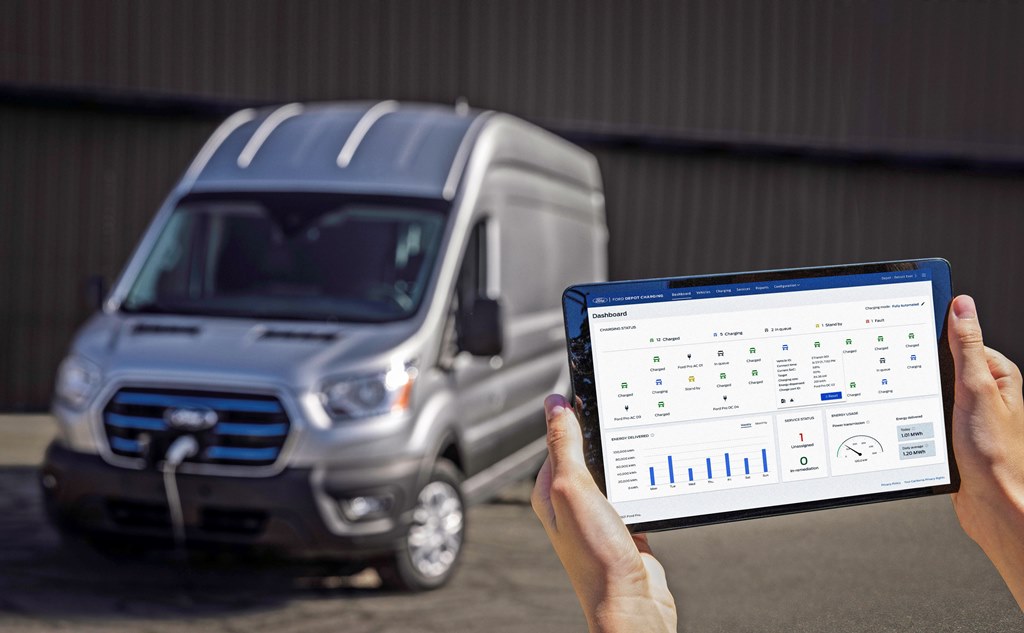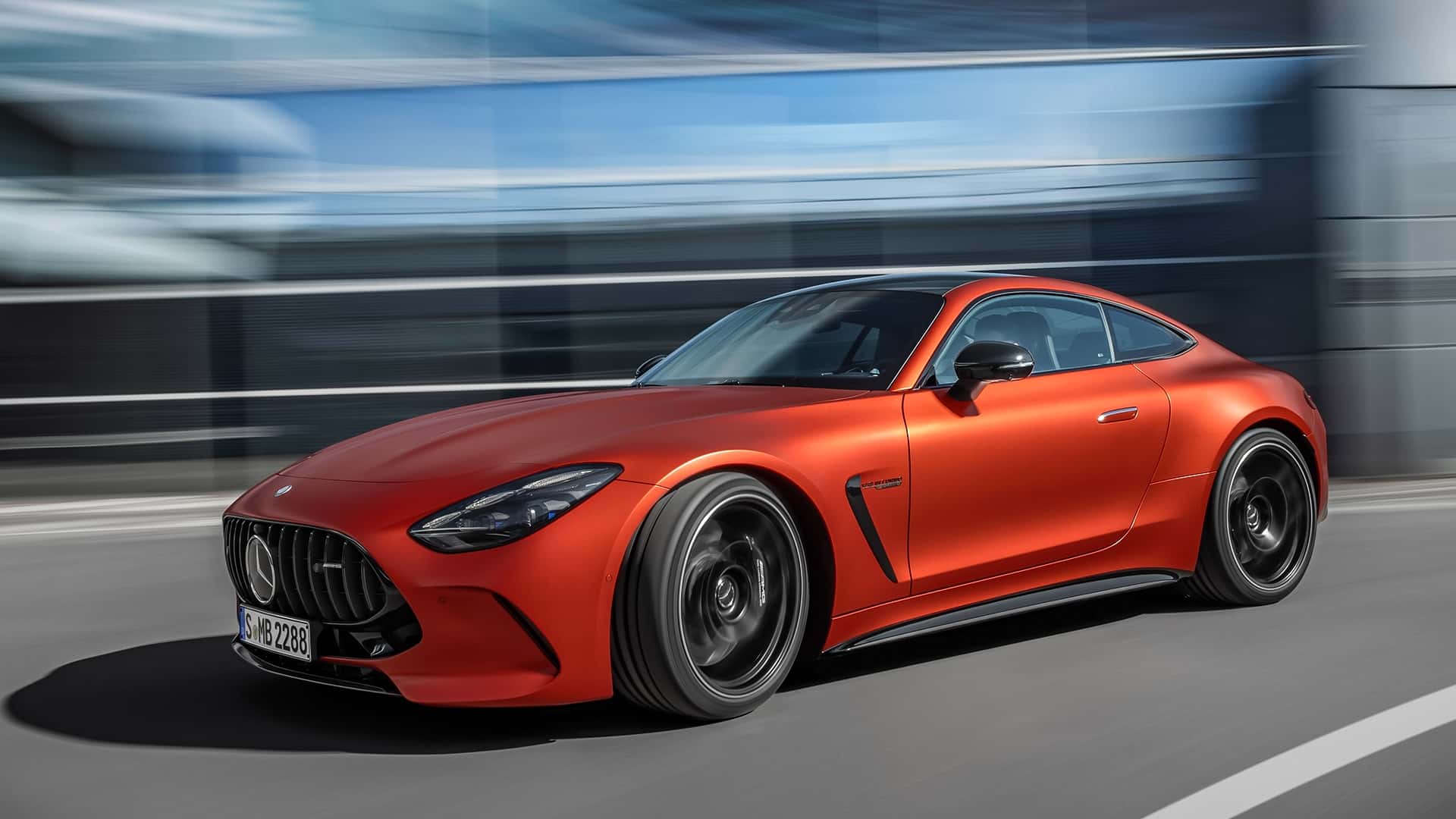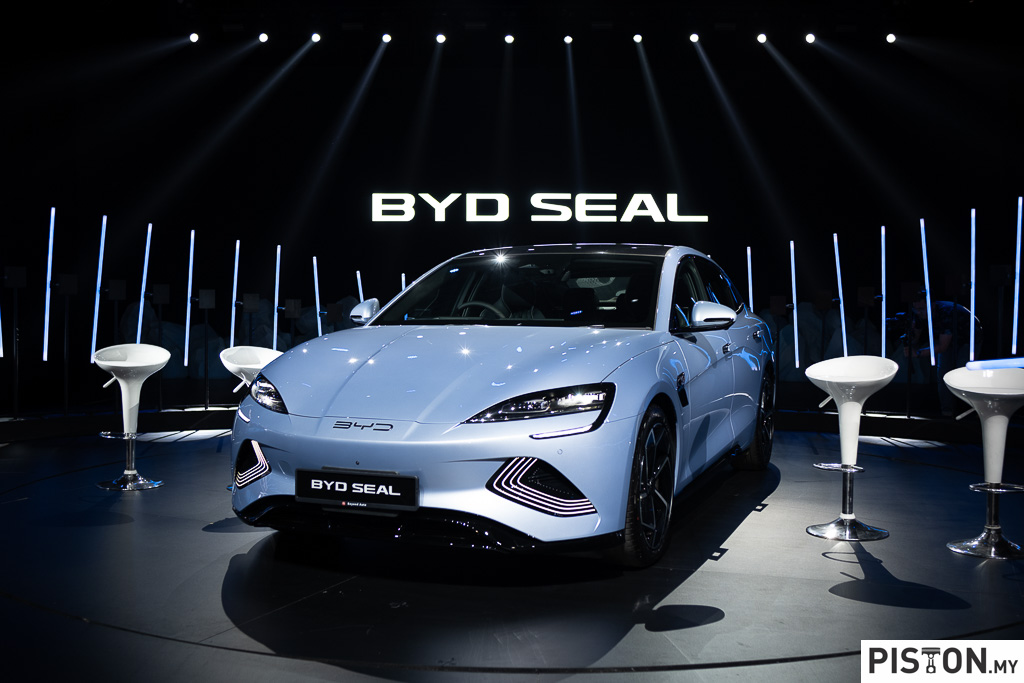Alan Mulally created ‘One Ford’ during his 8-year term as President & CEO of Ford Motor Company, a strategy that reorganised the company and drove it to profitable growth. Jim Farley, who sits in Mulally’s office today, has his own plan which is called ‘Ford Next’, also a transformative move to restructure the company and leverage on all its experience and resources to be a strong competitor in the new industry environment.
Last month, as part of Ford Next, he announced that Ford would create separate business units for products with combustion engines and products with electric powertrains. The former would be known as Ford Blue and the latter called Ford Model e. The two would be distinct but strategically interdependent businesses. Driving this move is recognition that different approaches, talents and, ultimately, organizations are required to develop different types of vehicles.
A third new development was recently announced to cover autonomous vehicles and new technologies. While the focus is on electrification, autonomous vehicles are nevertheless on the horizon and preparing for them is important. Farley knows that a giant like Ford cannot compete with start-ups that are lean and already focussed on new technologies. So he wants to establish units that can be more agile and responsive and the already existing Ford Autonomous Vehicles LLC (established in 2018) will now become part of Ford Next.
Farley believes in having the right people (and type of people) for the job and legacy approaches won’t work today. The engineers who have, for decades, worked on combustion engines may not be right for electric powertrains so having new units allows them to develop their own workforce of the right sort of people. In this way, development work is expected to be faster and ‘traditional’ methods won’t automatically be used.

Unlike Jim Hackett, his predecessor who came from an office furniture company, and unlike Mulally who was an aircraft engineer at Boeing, Farley is a car-guy and has had a log association with Ford (though he started in the auto industry with Toyota). So while the future is electric, he has promised that it’s not over for combustion engine vehicles from Ford anytime soon – and with reduced cost and complexity.
Nevertheless, the focus and investments will be on electric vehicles, both passenger and commercial. In Europe, for example, Ford will have a range of 9 electric models by 2024, with a target of selling more than 600,000 EVs in the region by 2026. This will contribute to the global goal of 2 million+ annual production of EVs by 2026.
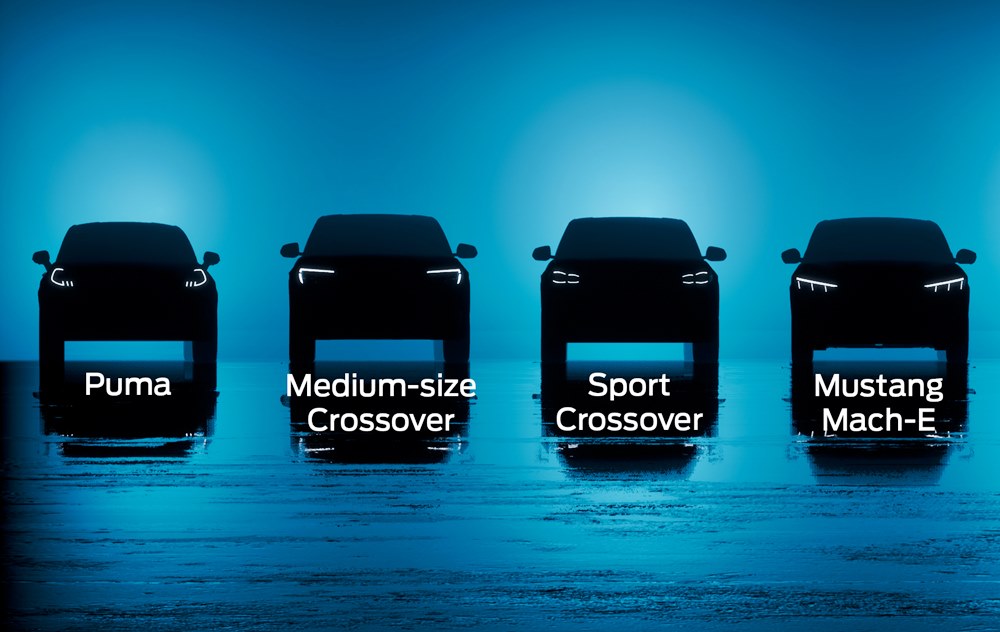
Like other major carmakers, Ford is also taking steps to ensure supplies of batteries – a crucial item in every EV. It will collaborate with other parties to create one of Europe’s largest commercial vehicle battery production sites in Turkey.
“This is why we have created Ford Model e – allowing us to move at the speed of a start-up to build electric vehicles that delight and offer connected services unique to Ford and that are built with Ford-grade engineering and safety,” said Farley.
Another new unit in Ford Next is Ford Pro which is aimed at commercial customers. In a market crowded with fragmented and consumer-grade products, customers are demanding complete solutions designed to meet the needs of commercial fleet operations. This is where Ford Pro comes in: its role is to help customers who want to transition into electrified vehicles by providing a one-stop shop for fleet operations and investing in key areas of the business. Ford Pro will offer a wide range of charging hardware – from home chargers to large-scale depot charging systems – all backed with integrated installation, software, service and financing.
Knowing that the transition to EVs will not be immediate, Ford Pro makes it easier to manage by providing a single solution for both combustion engine and EV fleet management. According to Ford, commercial customers turnover between 10 -15% of their fleet each year so many will manage a mixed fleet of vehicles for a long time. Ford Pro can therefore help as its customers phase out combustion vehicles and progressively replace them with EVs, supporting with the necessary hardware and services.
Ford to create separate business units for EVs and for combustion vehicles


